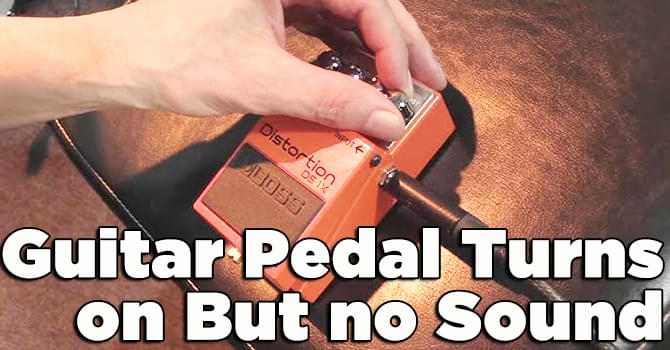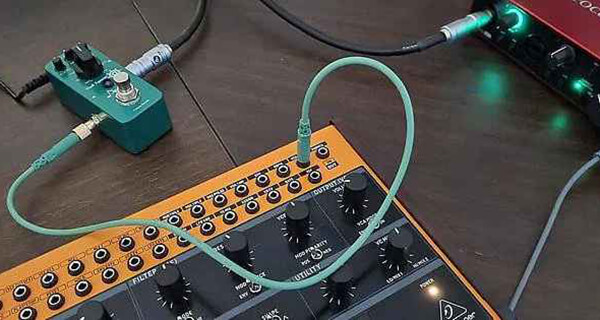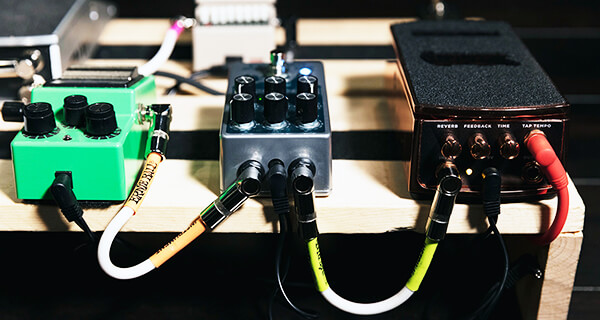Guitar Pedal Turns on But no Sound [Reason & Fix]
Guitar pedals are essential tools for musicians to shape and enhance their tone. However, encountering a situation where a pedal turns on but produces no sound can be frustrating and perplexing. This guide aims to provide a comprehensive overview of the potential reasons behind this issue and offers effective solutions to troubleshoot and resolve it.

# Table of Contents =>
Section 1: Understanding the Problem
Before delving into troubleshooting, it’s important to understand the various components of a guitar pedal’s signal chain and the potential points of failure. A typical signal chain includes the guitar, cable, pedal, amplifier, and speaker. When a pedal turns on but no sound is produced, the problem could stem from any of these elements.
Section 2: Common Causes and Solutions
Connection Issues:

A faulty cable can disrupt the signal flow. Ensure that both the input and output cables are properly connected and functioning. Try using different cables to eliminate cable-related problems.
Power Problems:
Inadequate or unstable power supply can lead to pedals malfunctioning. Check if you’re using the correct power adapter with the right voltage and current. Experiment with a different power source or adapter to see if the issue persists.
Battery Depletion:
If your pedal operates on battery power, a low or drained battery can result in no sound output. Replace the battery with a fresh one and ensure proper battery installation.
Switch and Bypass Mechanism:
A faulty switch or bypass mechanism can prevent the pedal from engaging properly. Inspect the switch for physical damage or debris. Cleaning or replacing the switch may be necessary.
Internal Circuitry and Components:

Internal components can wear out or become damaged over time. If you’re comfortable with electronics, open the pedal’s enclosure and examine the circuit board for loose connections, cold solder joints, or damaged components. Re-soldering or replacing faulty components might be needed.
Section 3: Advanced Troubleshooting Steps

Step 1: Check Your Cables & Connections –
Disconnect all cables: Start by disconnecting all cables from your pedal, including the input and output cables.
Inspect cables: Examine the cables for any visible damage, such as fraying or kinks. Replace any damaged cables.
Reconnect cables: Attach the cables securely to the pedal’s input and output jacks.
Test with different cables: Ensure a faulty cable is not the cause of the issue by trying different cables.
Step 2: Verify the Power Supply –

Check the power source: Check to see that the power adapter you’re using matches the specifications of your pedal’s voltage and current.
Try a different power source: You can eliminate power fluctuations by plugging your pedal into a different outlet if you use a wall adapter.
Battery-powered pedals: Battery replacement ensures that your pedal won’t run out of power.
Step 3: Inspect the Switch and Bypass Mechanism –

Toggle the switch: Gently toggle the pedal’s on/off switch multiple times to ensure it’s engaging properly. If you notice any crackling or intermittent sound, this could indicate a switch issue.
Bypass mode: If your pedal has a bypass switch, activate and deactivate the bypass mode to see if the issue persists.
Clean the switch: If you suspect the switch is dirty, use contact cleaner specifically designed for electronics to clean the switch and improve its functionality.
Step 4: Open the Pedal Enclosure (Advanced) –
Disconnect power: If you’re comfortable working with electronics, disconnect the pedal from power sources to avoid electric shock.
Open the enclosure: Carefully remove the screws holding the pedal’s enclosure together and gently open it to access the internal circuitry.
Inspect the circuit board: Examine the circuit board for loose connections, damaged components, or cold solder joints. Re-solder any questionable connections.

Clean internals: Remove any dust or debris from the circuit board using compressed air or a soft brush.
Step 5: Test in Different Signal Chain Positions –
Direct connection: Test the pedal by connecting your guitar directly to the pedal’s input and the pedal’s output to the amplifier. This helps determine if the issue is within the pedal itself.

Try different pedals: Swap out the problematic pedal with another one in your signal chain to see if the issue persists. This can help identify if the problem is pedal-specific or related to other components.
Step 6: Seek Professional Help –
Manufacturer support: If your pedal is under warranty or you’re unsure about performing repairs, contact the manufacturer for guidance or repair services.
Local technicians: If you’re not comfortable with electronics, consult a professional guitar technician or electronics repair shop for diagnosis and repairs.
Conclusion: Encountering a silent guitar pedal upon activation can be perplexing. This guide has equipped you with a systematic approach to address the issue effectively. By understanding potential causes and following the step-by-step guide provided, you can diagnose and potentially resolve the problem.
The problem may originate from cables, power supply, switches, internal components, or signal chain placement. Prioritize safety throughout troubleshooting. For complex issues, seek manufacturer support or consult local technicians.
Prevent future problems by maintaining gear and using quality power supplies. With these measures, you’ll sustain your pedal’s longevity and enjoy uninterrupted musical creativity.
In summary, troubleshooting a muted guitar pedal becomes manageable with patience and the right approach. Resume enhancing your musical expressions through your pedal board with confidence.
FAQs –
Q1: Can a faulty cable cause my pedal to have no sound?
Answer: Yes, a damaged or faulty cable can disrupt the signal flow and result in no sound output. Always inspect and replace damaged cables.
Q2: Is it possible that the power supply is causing the problem?
Answer: Absolutely. Inadequate or unstable power supply can lead to pedals not functioning correctly. Make sure you’re using the appropriate power adapter with the correct voltage and current specifications.
Q3: Why should I test my pedal’s switch and bypass mechanism?
Answer: A malfunctioning switch or bypass mechanism can prevent the pedal from engaging properly, resulting in no sound. Testing and cleaning these components can often resolve the issue.
Q4: How can I determine if the problem is internal circuitry related?
Answer: If basic troubleshooting steps don’t resolve the issue, opening the pedal’s enclosure and inspecting the circuit board for loose connections, damaged components, or cold solder joints is a logical next step.
Q5: Can the placement of my pedal in the signal chain affect the sound?
Answer: Yes, the order of pedals in your signal chain can impact your tone. Experiment with different pedal placements to ensure that the lack of sound isn’t due to interference between pedals.
Q6: How can I prevent this issue in the future?
Answer: Regularly maintain your gear by cleaning pedal jacks and switches. Invest in quality power supplies with isolated outputs to prevent power-related problems. Handle your pedals gently to avoid physical damage.
Last Updated on September 14, 2023 by Perry Garner



my pedal sill not working
How can help you? Ask your problem and happy to help you.